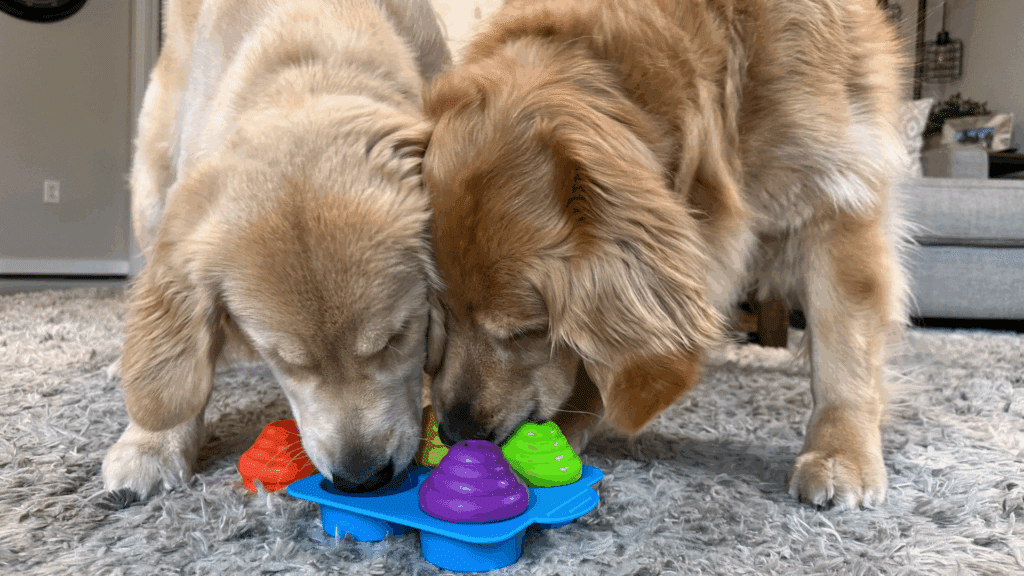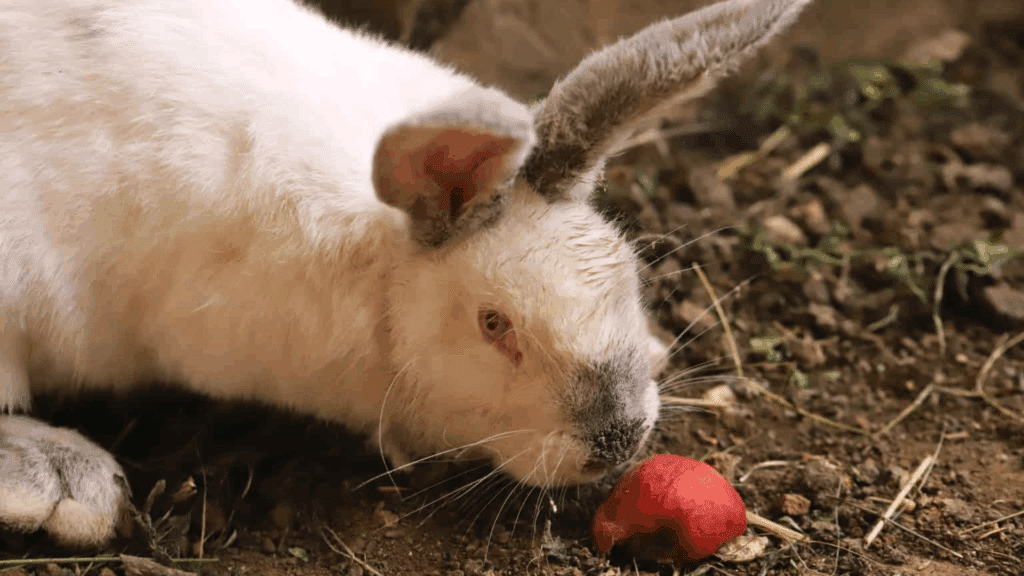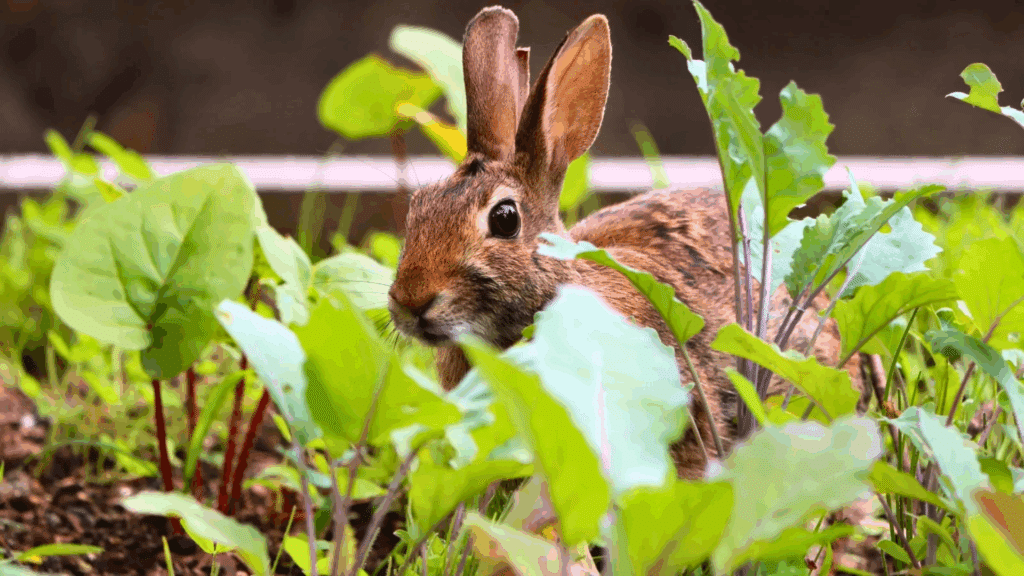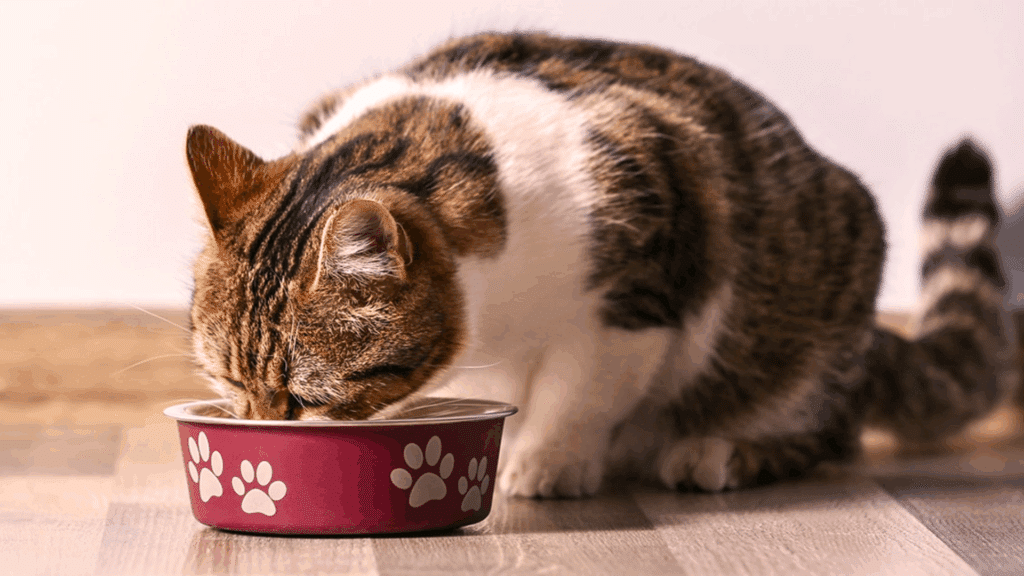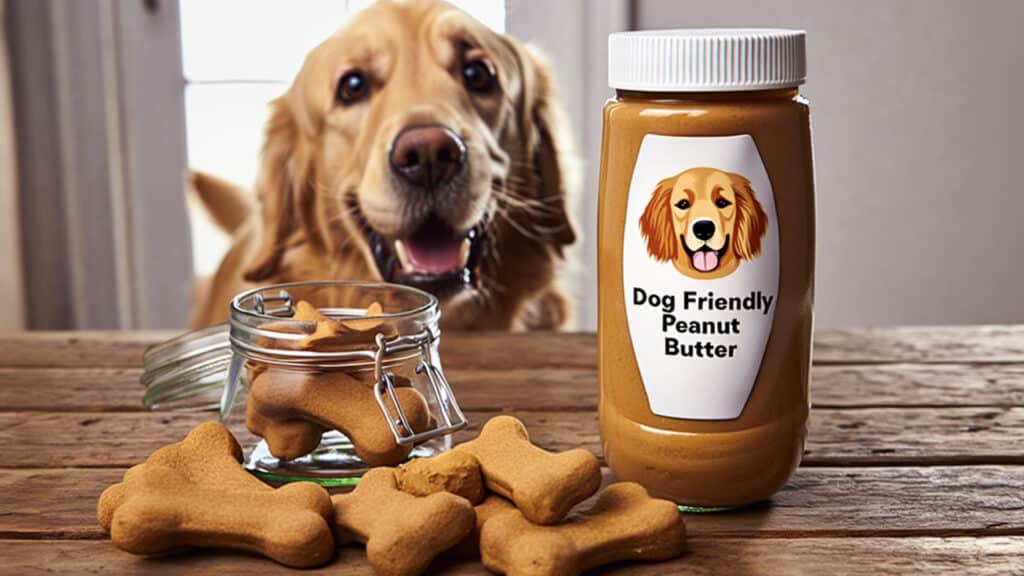Dog enrichment activities are fun games and exercises that keep your dog’s mind and body busy.
They are more than just playtime-they help dogs stay happy, healthy, and calm. When dogs are bored, they can get anxious or start chewing things they shouldn’t.
Enrichment helps prevent these problems by giving them something interesting to focus on.
Activities like scent games, puzzle toys, training, or outdoor experiences challenge their brain and expend their energy in a positive way.
Mental stimulation and physical exercise work together to make your dog smarter, stronger, and more confident.
With regular enrichment, your dog will be happier, more relaxed, and less likely to get into trouble around the house.
Understanding Dog Enrichment
Dog enrichment is all about giving your pet activities that keep both their body and mind active. It goes beyond simple playtime; it helps your dog stay happy, calm, and well-balanced.
Physical enrichment includes things like daily walks, fetch, tug-of-war, or agility exercises that let your dog burn energy.
Mental enrichment keeps their brain sharp through puzzle toys, training sessions, and scent-based games.
Without enough stimulation, dogs can get bored or frustrated, leading to chewing, barking, or restlessness. By adding enrichment to your dog’s routine, you help them stay engaged, confident, and content.
It also strengthens your bond and makes everyday life more enjoyable for both of you. An enriched dog is a happier, better-behaved companion.
Engaging Enrichment Activities for Dogs
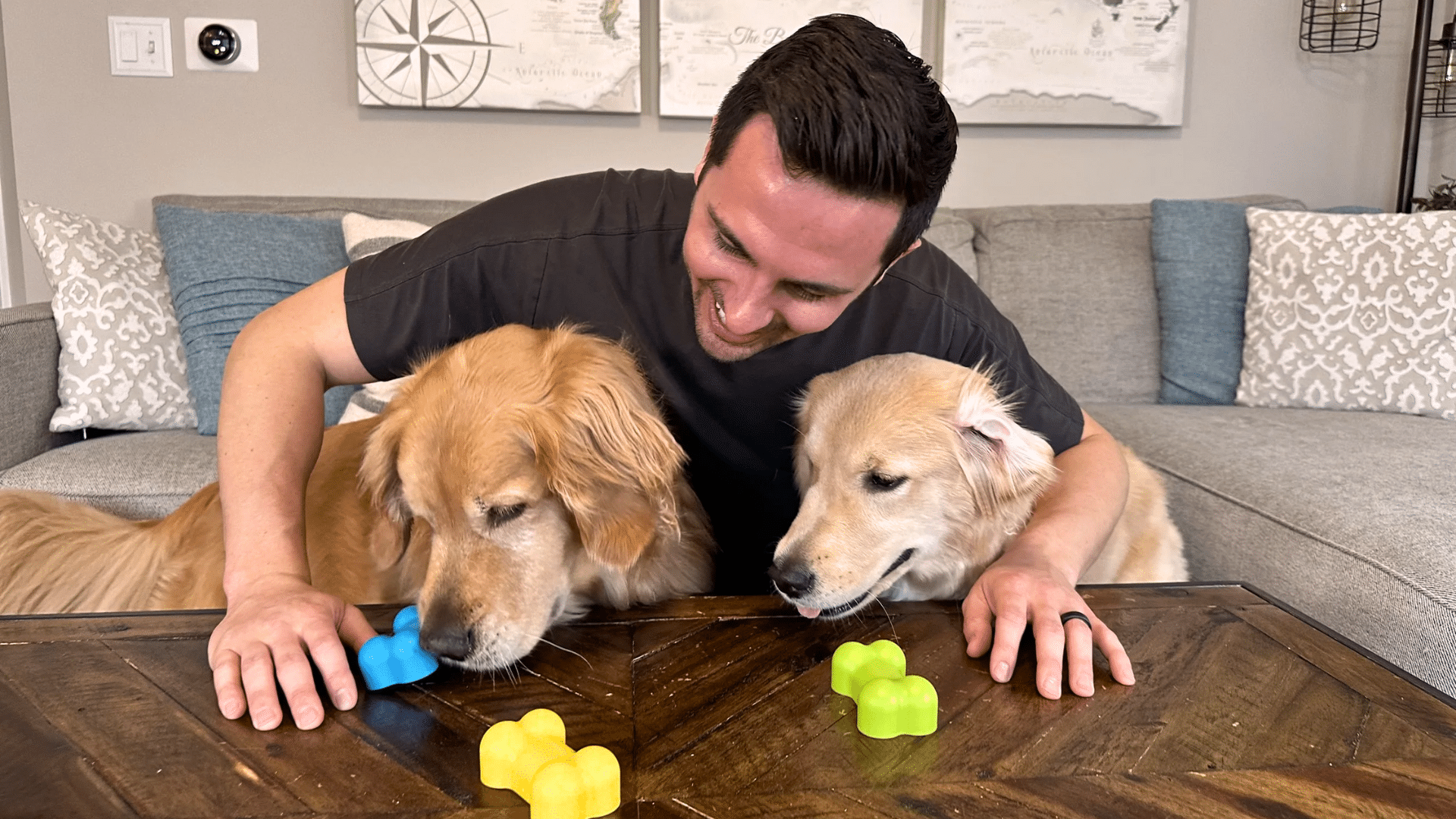
You don’t need fancy toys or expensive gear to keep your dog entertained. With a little creativity, you can turn everyday items, spaces, and simple objects into fun activities that challenge your dog’s body and mind.
1. Homemade Puzzle Toys Using Everyday Household Items
Create puzzle toys using simple household materials like muffin tins, boxes, or paper rolls.
Hide treats in a muffin tin and cover each cup with tennis balls, or poke holes in a cardboard box filled with kibble. These DIY puzzles keep your dog’s mind active and encourage problem-solving.
Switch up hiding methods to maintain interest and challenge.
They’re budget-friendly, fun, and mentally stimulating, turning mealtime into a rewarding and interactive activity your dog will look forward to every day.
2. DIY Snuffle Mats and Treat-Dispensing Games
Snuffle mats are great for engaging your dog’s nose and slowing down fast eaters. Make one by tying fleece strips onto a rubber mat or sink liner, then sprinkle kibble or treats throughout.
You can also create simple treat-dispensing toys using old containers or plastic bottles.
These games promote natural foraging instincts, reduce boredom, and provide mental enrichment.
Regular use helps your dog stay relaxed, engaged, and satisfied while enjoying a fun challenge that rewards patience and curiosity.
3. Scent Games: How to Teach Your Dog “Find It”
Scent games are perfect for boosting your dog’s mental focus and confidence. Begin by letting them sniff a treat, then hide it nearby and say, “Find it!”
As they master this, make hiding spots harder, under cups, behind furniture, or outdoors.
These games tap into your dog’s natural sniffing instincts, providing an excellent mental workout.
It’s a simple yet effective way to prevent boredom and strengthen your bond, all while encouraging patience and improving scent-tracking skills in a fun way.
4. Hide-And-Seek with Favorite Toys or Treats
Turn playtime into an adventure with hide-and-seek! Have your dog stay while you hide their favorite toy or treat, then give the cue to “Find it.”
Start with easy spots, then make the game more challenging as they improve.
You can even hide yourself for an exciting twist. This game encourages mental focus, recall, and problem-solving while strengthening your bond through teamwork.
It’s a playful, interactive way to keep your dog entertained indoors or outdoors without special equipment.
5. Backyard Agility Courses (low-Cost Setup)
Create a fun agility course in your yard using household items. Set up broomsticks for jumps, chairs for weaving, and hula hoops for tunnels.
Guide your dog through with treats or toys, praising them for completing each obstacle.
This activity builds strength, balance, and focus while boosting confidence.
It’s a great way to burn energy, improve coordination, and strengthen communication between you and your dog, all in a low-cost, exciting, and rewarding training experience that encourages active play.
6. Nature Walks with Scent Exploration
Turn your daily walk into an enriching “sniff adventure.” Let your dog explore new scents along different routes, parks, or trails.
Dogs experience the world through smell, so allowing extra time to sniff provides mental stimulation and relaxation.
Change your route frequently to keep things interesting and expose your dog to new environments.
This type of walk helps reduce stress, enhances focus, and provides a healthy outlet for curiosity while deepening your bond through shared exploration.
7. Fetch with a Twist: Adding Obstacles or Variations
Make fetch more exciting by introducing variety and challenges. Toss the ball over small obstacles, hide it behind furniture or bushes, or switch between toys like frisbees and squeaky balls.
These small adjustments engage your dog’s mind and body in new ways, improving coordination and problem-solving.
Adding short breaks or simple commands during fetch helps build focus and listening skills.
This upgraded version of a classic game offers both physical exercise and mental enrichment in one fun activity.
8. Water-Based Play for Dogs that Love Swimming
For dogs who enjoy water, swimming and splash play offer excellent exercise. Use a kiddie pool, lake, or beach for supervised water fun.
Introduce floating toys for fetch or basic obedience commands while they play.
Swimming builds muscle strength, supports joint health, and helps cool dogs off on warm days. It’s also a low-impact activity perfect for high-energy or older dogs.
Always ensure safety by supervising closely and using life vests for beginner swimmers.
9. Training New Tricks and Commands
Teaching your dog new tricks builds confidence, focus, and obedience. Begin with simple cues like “sit,” “spin,” or “shake,” rewarding progress with treats and praise.
Gradually move on to harder tricks such as “roll over” or “fetch your leash.”
Keep sessions short, fun, and consistent to maintain interest. Training is not only mentally stimulating but also strengthens the bond between you and your dog.
Learning together helps redirect energy positively and gives your dog a sense of purpose.
10. Frozen Treat Challenges
Frozen treats provide cooling enrichment and entertainment, especially in summer.
Combine water or broth with dog-safe ingredients like kibble, fruits, or peanut butter, then freeze in ice cube trays or molds.
Once solid, let your dog lick and chew the frozen treat block.
It’s a refreshing way to keep them busy and calm while soothing teething discomfort in puppies. Frozen treats also encourage slower eating and hydration, making them a healthy and engaging form of play.
11. Interactive Playdates with Other Dogs
Organizing playdates gives your dog valuable social interaction and exercise. Invite friendly, well-behaved dogs for supervised play in a secure area.
Introduce structured activities like fetch or tug-of-war to keep engagement positive. These interactions teach communication skills, relieve boredom, and help reduce anxiety.
Regular playdates encourage confidence, adaptability, and better manners.
Always monitor closely to ensure play remains safe and balanced, providing your dog with physical activity, mental stimulation, and social fulfillment all at once.
12. Food Scavenger Hunts Indoors or Outdoors
Turn mealtime into a fun scavenger hunt! Hide small portions of your dog’s kibble or treats around the house or yard, encouraging them to use their nose to find each one.
This game mimics natural foraging behavior and slows down fast eaters. It also keeps your dog mentally engaged and physically active. You can make it harder by hiding food under cups or boxes.
Scavenger hunts provide a satisfying balance of play, enrichment, and problem-solving.
13. Tug-Of-War for Bonding and Exercise
Tug-of-war is a great interactive game that strengthens both muscles and trust. Use a sturdy rope toy and let your dog pull while maintaining control with clear rules.
Encourage gentle play by rewarding “drop it” and “take it” commands.
Tug games help release energy, improve grip strength, and build impulse control. Always play safely and stop if your dog becomes overly excited.
This classic activity combines fun, fitness, and bonding in one engaging, confidence-building exercise.
Tips for Dog Owners
These tips can help you adapt activities, avoid common pitfalls, and ensure your dog stays engaged without becoming stressed or overwhelmed.
- Adapt for breed, age, and energy level: High-energy dogs need more activity, while seniors do best with gentle play. Puppies need safe chew toys and easy puzzles. Adjust playtime and challenge to fit your dog’s needs.
- Avoid common mistakes: Don’t use unsafe items, force participation, or overwhelm your dog with too many new activities at once.
- Prevent overstimulation: Rotate activities, provide breaks, and monitor your dog’s body language to keep play enjoyable and stress-free.
- Prioritize safety: Always supervise play, especially with new toys or other dogs. Remove damaged toys to avoid injury.
- Keep sessions short: Aim for several 10–15 minute play sessions rather than one long one to maintain focus and fun.
- Reward positive behavior: Use praise, treats, or petting to encourage engagement and strengthen good habits.
- Stay consistent: Incorporate enrichment regularly to build a balanced routine that supports both mental and physical well-being.
Budget-Friendly and DIY Ideas
Keeping your dog happy and entertained doesn’t have to be expensive. With a little creativity, you can turn everyday household items into exciting toys and games.
Cardboard boxes, old towels, and empty plastic bottles can become puzzle feeders, tug toys, or treat dispensers.
Even paper rolls can be used for hiding snacks or creating chew challenges. Training sessions, scent games, and hide-and-seek require no extra spending while offering great mental stimulation.
You can also build simple tunnels or obstacle courses using recyclable materials.
These budget-friendly DIY ideas encourage problem-solving, keep your dog physically active, and strengthen your bond.
With minimal effort and no high costs, you can provide hours of safe, enriching fun right at home.
Monitoring and Adjusting Activities
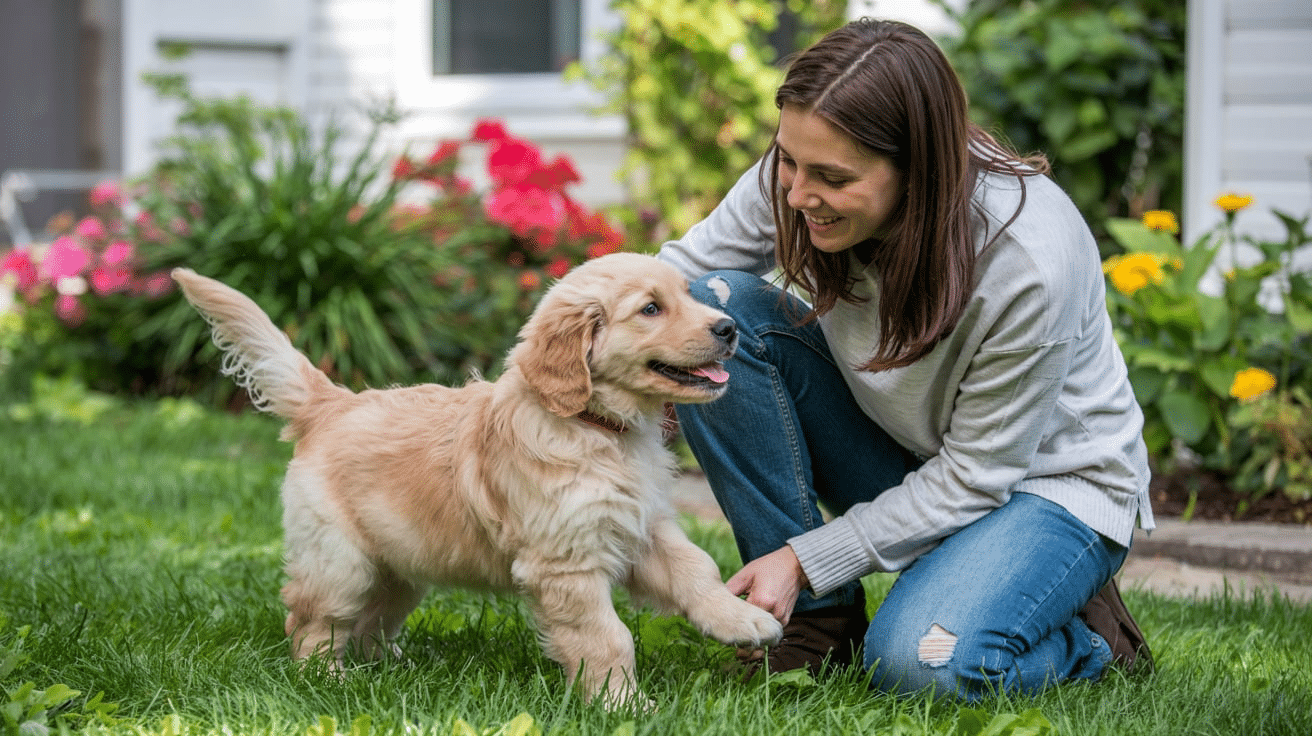
Keeping your dog engaged means paying attention to how they respond to different games and exercises.
Observing their behavior helps you understand what they enjoy, when to change activities, and how to make enrichment more effective and fun.
- Signs your dog enjoys an activity: Look for wagging tails, focused attention, excitement, and willingness to participate. Happy vocalizations or returning to the game also show engagement.
- When to rotate or increase challenge: If your dog loses interest or completes a task too quickly, it’s time to rotate toys or make activities harder. Gradual increases prevent boredom while keeping them motivated.
- Tracking behavioral improvements: Note calmer behavior, reduced boredom-related actions, and better focus as indicators of successful enrichment.
Conclusion
Enrichment is more than simple play; it’s an essential part of keeping your dog happy, healthy, and relaxed.
Activities that challenge their body and mind help prevent boredom while building confidence and calm behavior. The best part? You don’t need fancy gear or costly toys.
Everyday items like boxes, towels, and bottles can turn into exciting games and puzzles.
Keep trying new activities and watch how your dog responds. Every dog learns differently, so find what sparks their joy.
Celebrate small victories, share your creative ideas with other dog owners, and enjoy the bond these moments create. A little imagination and time can turn ordinary play into something truly rewarding.


